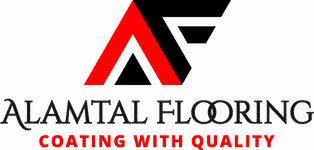
The garage floor is often overlooked when it comes to home or business maintenance. However, it plays a crucial role in the overall aesthetics and functionality of the space. Whether you have an epoxy or polyaspartic garage floor coating, proper care is essential to keep it looking its best and ensure its longevity.
In this guide, we will walk you through the steps to maintain and clean your garage floor effectively. This information is valuable for Minnesota homeowners and business owners looking to preserve the integrity of their garage floors.
Minnesota Garage Floor Coatings
The garage floor is subjected to heavy use, including vehicle traffic, chemical spills, and foot traffic. Epoxy and polyaspartic garage floor coatings are popular choices due to their durability and ease of maintenance. Proper care not only enhances the appearance of your garage but also prolongs the life of the coating.
Tools and Equipment to Maintain Your Garage in Minnesota
Before you embark on the journey of maintaining and cleaning your garage floor, it’s essential to gather the necessary tools and equipment. Here’s what you’ll need:
Tools:
- Broom: A stiff-bristle broom is excellent for sweeping away dirt and debris.
- Mop: Use a microfiber mop for regular cleaning.
- Squeegee: A squeegee comes in handy for removing water and cleaning solutions.
- Pressure Washer: For deep cleaning, a pressure washer can be very effective.
- Bucket: You’ll need a bucket for mixing cleaning solutions.
- Scrub Brush: A scrub brush can help tackle stubborn stains.
- Paint Roller: Use a paint roller with an extension pole for applying cleaning solutions and sealants.
Equipment:
- Safety Gear: Safety should be a priority. Wear gloves, safety goggles, and, if needed, a respirator mask.
- Cleaning Solutions: Depending on the type of stains you’re dealing with, you may need specific cleaning solutions. Common options include mild dish soap, vinegar, or specialized garage floor cleaners.
- Oil Stain Remover: If you have oil stains, consider purchasing an oil stain remover from your local hardware store.
- Sealant: Depending on the condition of your garage floor coating, you might need a sealant to reseal the surface after cleaning.
- Degreaser: For deep cleaning and degreasing, a suitable degreaser can be effective.
- Floor Scrubber or Buffer: If you have a large garage, using a floor scrubber or buffer can make the cleaning process more efficient.
Maintenance Tips
- Regular Sweeping
Regular sweeping is the first line of defense against dirt, dust, and debris on your garage floor. Aim to sweep at least once a week or more if your garage sees heavy use. Sweep away leaves, dirt, and other debris that can accumulate over time. This simple step can prevent dirt from scratching the surface of your coating.
- Stain Removal
Garage floors are prone to stains from oil, grease, chemicals, and more. It’s crucial to address stains promptly to prevent permanent damage. Here’s how to tackle common stains:
- Oil and Grease Stains: Use an oil stain remover or a mixture of baking soda and water. Scrub the stain with a brush, then rinse thoroughly.
- Chemical Stains: Depending on the chemical, you may need specific cleaners. Always follow safety guidelines when handling chemicals.
- Rust Stains: Use a rust remover, following the manufacturer’s instructions.
- Preventing Damage
Preventing damage to your garage floor coating is essential for its longevity. Here are some preventive measures:
- Avoid Heavy Impacts: Be cautious when moving heavy items or tools to prevent impact damage.
- Use Furniture Pads: If you have furniture or equipment in your garage, use furniture pads to protect the floor when moving items.
- Protect from Sharp Objects: Avoid dragging sharp objects, as they can scratch the surface.
- Cracks and Damage Repair
Inspect your garage floor regularly for cracks or damage. If you notice any issues, it’s crucial to address them promptly to prevent further deterioration. Here’s how to repair minor cracks and damage:
- Clean the Area: Remove any debris or loose material from the damaged area.
- Fill with Epoxy Filler: Use epoxy filler to fill the crack or damaged portion. Follow the manufacturer’s instructions for mixing and applying the filler.
- Smooth and Level: After applying the filler, smooth and level it with a putty knife or trowel.
- Allow to Cure: Let the filler cure completely before walking or driving on it.
Cleaning Techniques
- Basic Cleaning
Regular basic cleaning is essential to remove surface dirt and maintain the overall cleanliness of your garage floor. Here’s how to do it:
- Sweep: Start by sweeping the entire garage floor to remove loose dirt and debris.
- Mix Cleaning Solution: In a bucket, mix a solution of warm water and a mild dish soap or a specialized garage floor cleaner.
- Mop: Dip a microfiber mop into the cleaning solution and wring it out. Mop the floor, working in small sections. Rinse the mop frequently.
- Rinse: After mopping, rinse the floor with clean water to remove any soap residue. Use a squeegee to remove excess water.
- Deep Cleaning
Deep cleaning is necessary when your garage floor requires a more thorough cleaning to remove embedded dirt and stains. Here’s how to do it:
- Move Everything: Clear your garage of any items, so you have an empty space to work in.
- Pressure Washer: If you have a pressure washer, this is the most efficient tool for deep cleaning. Use it to spray the entire floor with water.
- Cleaning Solution: Mix a cleaning solution suitable for your garage floor’s coating. Apply the solution to the floor and let it sit for a few minutes.
- Scrub: Use a scrub brush or a floor scrubber to agitate the cleaning solution and remove stubborn stains.
- Rinse: Rinse the floor thoroughly with a pressure washer or a hose. Ensure all cleaning solution is removed.
- Dry: Let the floor dry completely before returning items to the garage.
- Cleaning Oil Stains
Oil stains are a common issue in garages. Here’s how to clean them effectively:
- Absorbent Material: Begin by covering the oil stain with an absorbent material like cat litter or baking soda. Leave it for a few hours or overnight to absorb the oil.
- Scrub: After the oil is absorbed, scrub the area with a brush and a mixture of dish soap and warm water.
- Rinse: Rinse the area with clean water and a pressure washer or hose.
Maintaining the Coating
To ensure the longevity of your epoxy or polyaspartic floor coating, consider these maintenance tips:
- Reseal: Depending on the wear and tear, you may need to reseal your garage floor every few years. Consult with a professional for guidance.
- Regular Inspection: Periodically inspect your garage floor for any signs of wear, damage, or areas that may need touch-ups.
Safety Precautions
Safety should always be a priority when cleaning and maintaining your garage floor:
- Ventilation: Ensure proper ventilation when using cleaning solutions or chemicals. Open garage doors and windows if possible.
- Safety Gear: Wear appropriate safety gear, including gloves, safety goggles, and, if needed, a respirator mask.
The Best Way to Maintain Your Garage Floor Coating
Maintaining and cleaning your epoxy or polyaspartic garage floor doesn’t have to be a daunting task. With the right tools, equipment, and techniques, you can keep your garage floor looking its best for years to come. Regular sweeping and addressing stains promptly are key to preserving the beauty and functionality of your garage floor. For deeper cleaning and maintenance needs, consider professional services. By following these guidelines, Minnesota homeowners and business owners can ensure that their garage floors remain in top-notch condition.



